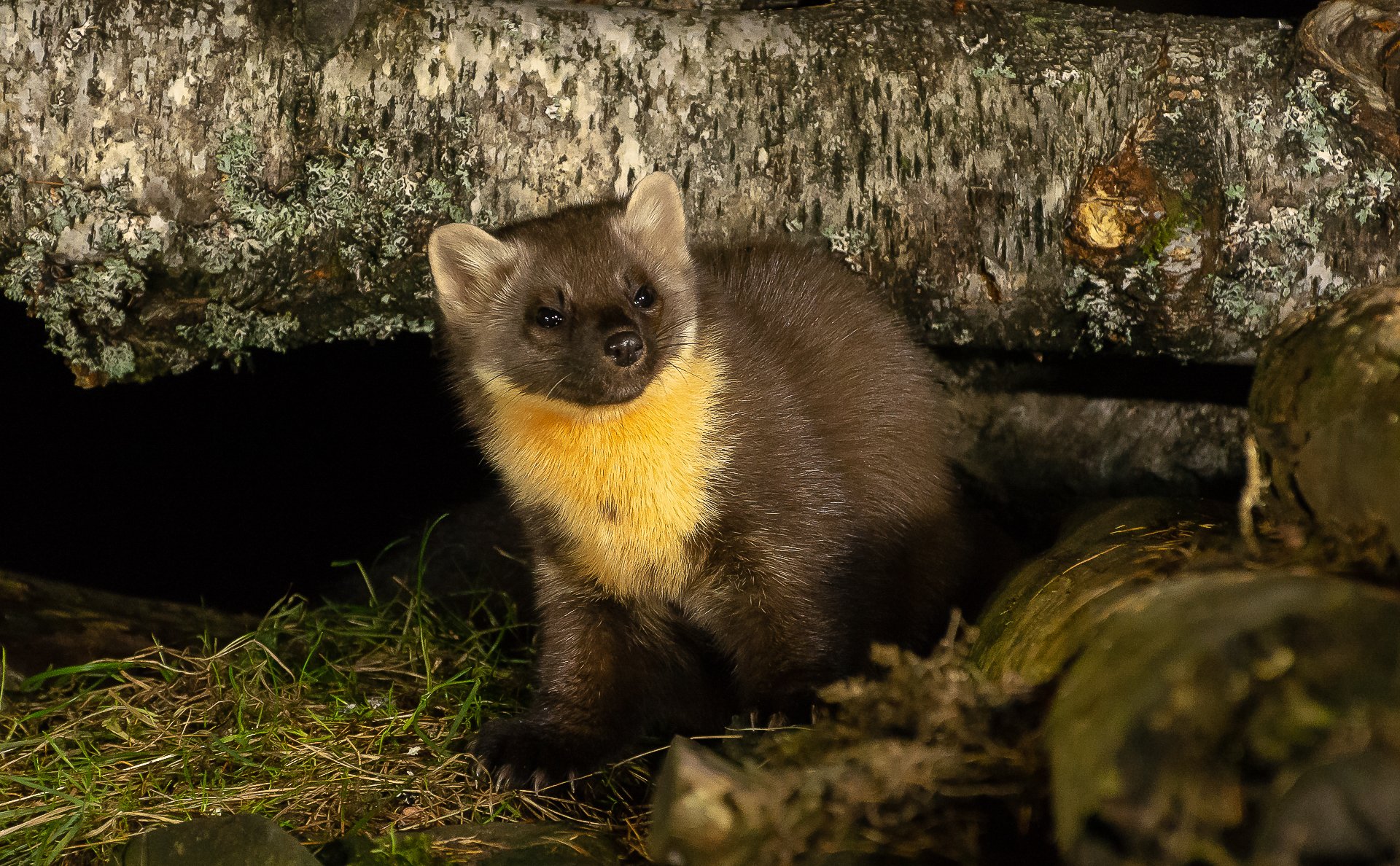Top five facts about pine martens
Pine martens are one of the larger creatures you’ll see in Scotland’s rainforest – though you’d be lucky to actually spot one as they’re very secretive. Despite their name, these tree specialists are not actually restricted to pine forests, but can be found in mixed and broad-leaved woodlands as well as more open habitats. Here are some top facts about these beautiful animals.
They’re related to badgers
Pine martens are a member of the mustelid family, which means they’re related to badgers, otters, weasels and stoats. These animals mostly live very secretive, often solitary lives (with the exception of badgers who live in family groups), and can be found in a broad range of habitats. Pine martens are much bigger than stoats, and a little smaller than otters, about 75cm long including their slightly bushy tails. The two mustelids you might confuse with pine martens are pole cats (which are extremely rare in Scotland) and the American mink. This is an invasive, non-native species that’s causing a lot of harm to native wildlife, particularly water voles and ground-nesting birds. Pine martens and mink are a similar shape and colour, but mink have smaller dark ears and a white mark on their chin, while pine martens have a distinctive creamy-white bib.
They’re slowly recovering from historic population declines
Pine martens could once be found across much of the UK, but their numbers plummeted in the 19th century, due to hunting and the loss of habitat. By the beginning of the 20th century, they were probably extinct in England and only small numbers survived in remoter areas of the Scottish Highlands and in Wales. But now, thanks to the work of conservationists and legal protection, their population is growing and they’re returning to places where they haven’t been seen for over a hundred years. In Scotland they can now be found down into the Central Belt and Dumfries and Galloway as well as in many parts of the rainforest to the west. After re-introductions, there’s also a small, but growing, population in England. They’re not out of the woods yet (so to speak) but their future is certainly looking brighter.
They’re incredibly agile
Pine martens are quite chunky animals, but they can be surprisingly fast and nimble, both on the ground and in the trees where they spend most of their time. They have to be, as one of their prey species is the red squirrel, and if you’ve ever watched one of those running around in the tree branches, you’ll know that they don’t hang around! Like the squirrels, pine martens are totally at home in the trees, using their long tails for balance, and their strong claws for grip. But they do come down to the ground to forage and move around, so you may spot one on the forest floor or even crossing a road to get from one bit of woodland to another. This agility also helps them avoid predators, though these are limited to foxes and eagles.
They may actually be helping red squirrels to survive
Although pine martens eat red squirrels (when they can catch them) their slow comeback across Scotland seems to be having a remarkable and unexpected impact: it’s actually helping the red squirrels to make a comeback as well. Scientists aren’t entirely sure why this might be the case, and more research is needed to find all the answers. But one theory is that pine martens find invasive grey squirrels easier to catch than the nippy reds. This may be due to the fact that grey squirrels spend more time on the ground, or because they’re slower and heavier, or even because the grey squirrels aren’t familiar with pine martens, so they haven’t developed a good strategy for evading them. Whatever the reason, fewer grey squirrels is good news for the reds, meaning their numbers go up, even if they do have to keep more of an eye out for pine martens.
They like peanut butter sandwiches
Pine martens have quite a fierce reputation as predators, and are known to eat small mammals like mice and rats, as well as insects, roosting birds and birds’ eggs. But they’re actually omnivores, and will eat berries, apples and fungi depending on the time of year and what’s available. They’re also smart, opportunistic animals, and have learned to visit feeding stations left out for red squirrels, as well as bird feeders, where they’ll happily gobble up peanuts and fat. They’ll also come into rural gardens, where they seem to have developed a taste for rather a surprising food: peanut butter and jam sandwiches! It’s questionable whether these are good for them, however, so if you’re lucky enough to have pine martens visiting your garden at night, it might be better to stick to peanuts and fruit.
Where to see pine martens
Pine martens are very secretive, and even if you live in an area with a good population, you may never see one. They’re mostly nocturnal, so if you think you have pine martens coming to your garden, you could always put up a camera trap to see if you could get a picture or a video. Places with feeding stations for red squirrels often see pine martens as well, even during the day, but other than that, seeing these wonderful animals is mostly about luck.
Summer evenings and mornings are a good time to look, as these are the times when they’re most active in daylight. And remember to look up, as they do spend a lot of their lives in the branches. But you might also see signs of pine martens on the forest floor, particularly their poo!
Find out more about pine martens here: https://www.woodlandtrust.org.uk/trees-woods-and-wildlife/animals/mammals/pine-marten/



